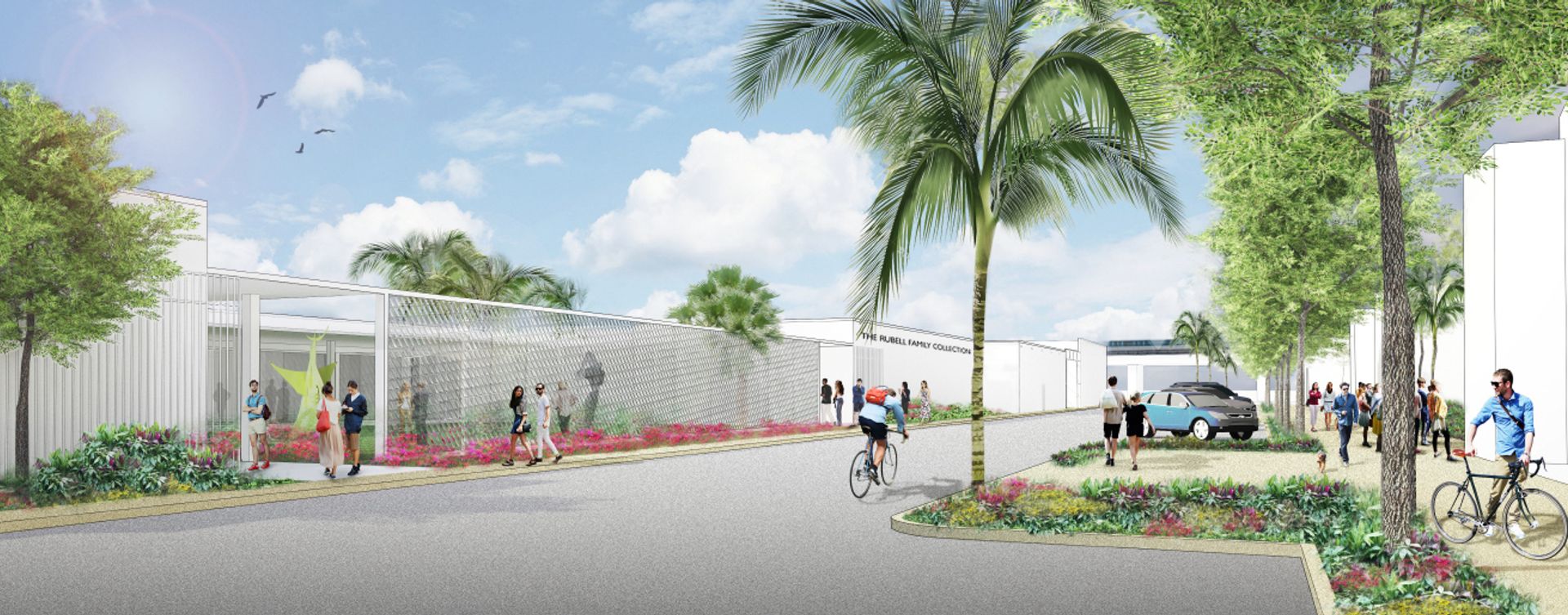Museums across Miami are expanding. By the time Art Basel in Miami Beach rolls around next year, the Institute of Contemporary Art (ICA) and the Bass Museum will have new homes, with the Rubell Family Collection due to follow in 2018.
The Rubell museum, which has operated out of Wynwood since 1993, announced plans this week to relocate to a 100,000 sq. ft space in the Allapattah neighbourhood, a five-minute drive away. Due to open in December 2018, the new building—a warehouse remodelled by Annabelle Selldorf—will be larger than the expanded Bass and the ICA combined.

The added space will enable the collectors Don and Mera Rubell to rotate shows without having to close the entire gallery. Another draw was the site’s proximity to the Santa Clara Metrorail station. “The connection to public transportation was very important for us philosophically,” Mera Rubell says. “Kids can hop on and commute by rail to our museum.” The current building will be put on the market for sale or rent to help fund construction and programming costs.
Flexible walls
Meanwhile, public institutions such as the ICA—which plans to open its new 37,500 sq. ft home in the Design District on 1 December 2017—are working to distinguish themselves from the private collection museums for which Miami is best known. Aranguren and Gallegos Architects’ design for the ICA’s new building aims to “address the demands of contemporary art”, says the museum’s chief curator, Alex Gartenfeld. To that end, the second floor has no permanently built walls, allowing for sprawling performances and installations.
The ICA has a unique luxury: construction of the new building is being funded entirely by the Miami-based collectors Norman and Irma Braman, who also bought land for a neighbouring 15,000 sq. ft sculpture garden. The rest of the property was donated by the developer Craig Robins. The museum declined to specify building costs.
The expansion of the Bass Museum, on the other hand, is being paid for largely by a $7.5m grant from the city of Miami Beach. The project will add 10,000 sq. ft within the current footprint, including a cafe, gallery space and storage. The museum has been careful to stay within its $8.2m budget—which the museum’s director, Silvia Karman Cubiñá, says even covers “the ribbon for the ribbon-cutting ceremony”. “We are building as much as we can, but we don’t want to go broke,” she says. “Too many institutions build and then don’t have the means for programming.”
Slowly consolidating
Historically, art in Miami has been anchored by private collections, splintering the support base for any single museum or initiative. It remains to be seen what kind of legacy plans are in place for Miami’s most prominent private collection museums. But the city has slowly been consolidating around key institutions. In 2011, the real-estate developer Jorge Pérez gave $40m in art and money to the Miami Art Museum, which was renamed in his honour.
“Every great city has great public institutions and we’re starting to grow into that,” says the Miami-based collector Dennis Scholl, who has donated works to the Pérez Art Museum Miami. He predicts that collectors will increasingly give to public institutions—but that transition takes time. “We are still a very young city,” he says. “Philadelphia is 250 years older than Miami. There’s your context.”

